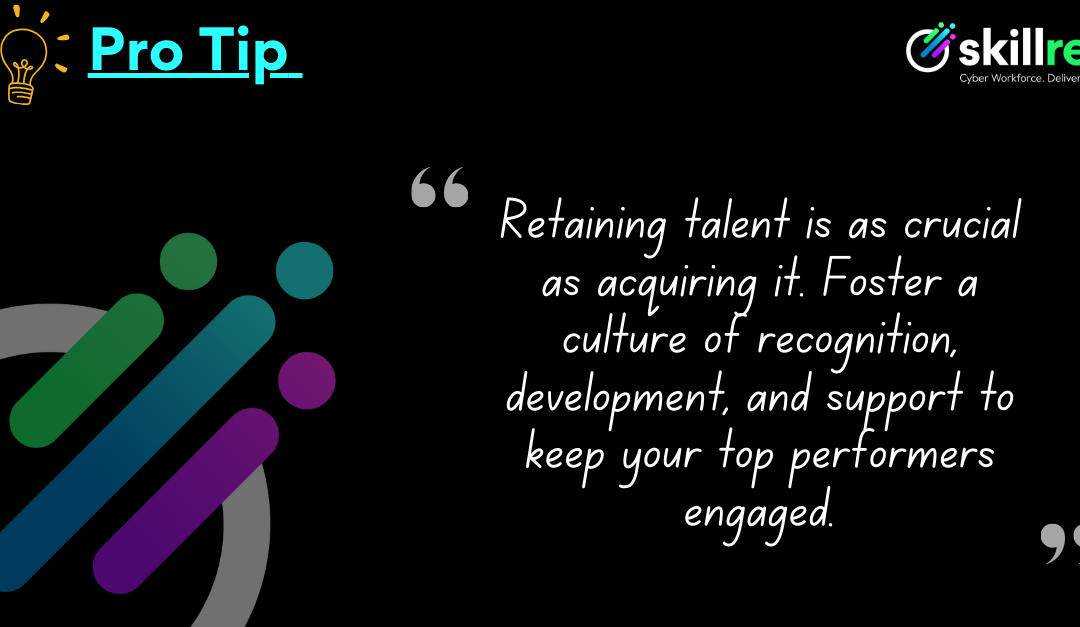In today’s rapidly evolving cybersecurity landscape, acquiring top talent is only half the battle. Retaining that talent is just as essential—if not more so—to maintain organizational stability and reduce the risks associated with high turnover. A forthcoming ISC2 2024 Cybersecurity Workforce Study helps shed light on just how critical this issue is, with 67% of organizations reporting shortages in cybersecurity professionals. Even more concerning, 58% of respondents said that these talent gaps are putting their organizations at significant risk.
These findings highlight the importance of building workforce strategies that focus not only on recruitment but also on retention through recognition, development, and support.
1. The Cost of Skills Gaps and Turnover
When skilled professionals leave, it’s not just a matter of hiring a replacement. Organizations lose institutional knowledge, disrupt team dynamics, and increase the workload on remaining employees, contributing to burnout. According to the ISC2 study, organizations with significant skills shortages experience higher risks across their operations, with many organizations falling behind on cloud security, AI skills, and incident response capabilities. Without these critical competencies, organizations are more vulnerable to emerging threats and face greater compliance risks.
As the threat landscape becomes increasingly complex—with 74% of professionals reporting that the current landscape is the most challenging it’s been in five years—retaining talent through meaningful engagement becomes crucial to staying ahead.
2. Foster Recognition, Growth, and Support
One of the most effective ways to retain talent is to create a work environment where employees feel recognized, valued, and supported. Cybersecurity professionals—especially those in high-pressure roles—need more than competitive salaries. They thrive in environments that foster continuous learning, offer room for career growth, and recognize their contributions meaningfully.
What Organizations Can Do:
- Recognition: Implement regular, meaningful recognition programs, both formal and informal, to celebrate individual and team successes.
- Development: Offer ongoing training, access to certifications, and internal career paths that align with the evolving skills your team needs.
- Support: Provide mental health resources and build a supportive culture that values work-life balance and inclusion.
Without these strategies, burnout becomes a serious threat, especially in an industry where professionals are already stretched thin by increasing demands and limited resources.
3. Align Your Retention Strategy with Business Goals
Retention strategies should be part of a broader workforce plan that aligns with your organization’s goals. As organizations struggle with budget constraints, hiring freezes, and layoffs, leaders must prioritize professional development and internal mobility as key components of their retention strategy. Unfortunately many cybersecurity professionals are still not receiving the training or career development they need, contributing to the widening skills gap.
Developing your workforce internally not only improves employee engagement but also ensures your team is equipped with the right skills to navigate today’s threats and anticipate tomorrow’s.
Conclusion: Invest in Retention to Stay Ahead
Retaining top talent is just as critical as recruiting it. With skills shortages continuing to put organizations at risk, leaders must prioritize strategies that foster growth, recognition, and support. Retention isn’t just about keeping your best people—it’s about ensuring they remain engaged, motivated, and prepared to meet the evolving challenges ahead.
At skillrex, we specialize in building workforce strategies that extend beyond recruitment. From career development plans to recognition frameworks, we help organizations create environments where top talent stays and thrives. Let’s work together to develop your team’s full potential.
#TalentRetention #WorkforceDevelopment #EmployeeEngagement #CyberSecurity #skillrex
For more insights, check out the latest findings from the ISC2’s 2024 Cybersecurity Workforce Study


